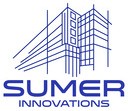Introduction
In sectors including construction, shipbuilding, automobile, and aerospace, structural steel is essential. It gives contemporary infrastructure, such as skyscrapers and bridges, strength and endurance. However, problems including corrosion, paint accumulation, oil, and other impurities affect steel surfaces. These problems diminish the lifespan of steel structures and decrease their performance if they are not addressed.
Sandblasting has been the most popular cleaning technique for many years. It works, but it damages the environment, generates trash, and poses health hazards. Because laser cleaning is safer, more environmentally friendly, and more effective, companies are moving toward it today.
What Is Laser Cleaning?
Concentrated laser beams are used in laser cleaning machines to eliminate surface impurities such as paint, grease, and rust. When the beam strikes the steel, it vaporizes the unwanted material while leaving the base metal untouched.
This is a very regulated, non-contact process. It does not erode the surface like abrasive treatments do. This method is now more widely available across industries thanks to contemporary laser cleaning equipment.
Problems With Sandblasting
Despite its widespread use for more than a century, sandblasting has significant disadvantages:
- Impact on the environment: Generates a lot of dust and abrasive debris.
- Risks to health: Workers are exposed to silica dust, which can lead to lung conditions.
- Surface damage: Microabrasions could result from high-pressure blasting.
- Costs associated with disposal: Gathering and getting rid of used abrasive material is costly.
- Disruption and noise: Sandblasting is noisy and inappropriate in many cities.
- These difficulties push industry to look for safer and more environmentally friendly solutions.
Why Laser Cleaning Is A Better Choice
- Environmentally Friendly Function
There are no chemicals or abrasive materials used in laser cleaning. It is therefore among the cleanest technologies available because virtually little secondary trash is produced.
- Enhanced Safety for Workers
Very little to no dust is produced during the process. Additionally, remote controls and enclosed cleaning heads are features of modern systems that lower operator health concerns.
- Accuracy and Management
You can change the laser’s depth and power as necessary. This guarantees that impurities are eliminated without causing any harm to the steel surface. The accuracy is particularly helpful for expensive or fragile parts.
- Long-Term Cost Savings
The initial expenditure for laser cleaning machines is considerable. Over time, nevertheless, they save money by lowering labor, waste disposal, and consumable costs.
- Efficiency and Speed
For some applications, laser cleaning is frequently quicker than sandblasting. This keeps projects on track and minimizes downtime.
Applications Of Laser Cleaning In Structural Steel
- Bridge restoration: Laser cleaning eliminates paint and rust without producing hazardous dust.
- Shipbuilding: Gets steel surfaces ready for painting or welding in maritime settings.
- Construction: Before assembling, clean the panels, reinforcements, and beams.
- Energy sector: Safely maintains power plant components and pipelines.
- Precision cleaning for premium parts is offered by the automotive and aerospace industries.
Comparing Sandblasting And Laser Cleaning
| Waste Generation | High (dust, abrasives, chemicals) | Minimal (no abrasive media) |
| Worker Safety | Risk of silica and toxic exposure | Much safer with enclosed systems |
| Surface Impact | Can damage steel with abrasions | Non-abrasive, protects steel |
| Environmental Impact | Dust and waste pollution | Clean and sustainable |
| Long-Term Costs | Higher (media + disposal fees) | Lower after equipment investment |
The Advantages And Disadvantages Of Laser Cleaning
Each technology has its own advantages and disadvantages of laser cleaning, which helps industries decide the most suitable method for their needs.
. Understanding the benefits and drawbacks of laser cleaning aids businesses in selecting the best approach.
Benefits
- Eco-friendly and devoid of chemicals
- High accuracy and programmable parameters
- safer for employees
- Low upkeep in contrast to aggressive techniques
- Over time, cost-effective
Drawbacks
- High initial equipment costs
- need knowledgeable operators.
- For extensive rust removal on broad surfaces, it could take longer.
- For extremely thick coatings, less effective
Future Of Steel Surface Cleaning
Nowadays, sustainability is a top concern worldwide. This need is met by laser cleaning, which provides a safer and cleaner alternative. Its application will further increase with advancements in automation, robots, and portable systems.
In many industries, laser cleaning will probably take the place of conventional abrasive procedures as waste management and worker safety standards tighten.
In conclusion
The way that companies prepare and maintain structural steel is being revolutionized by laser cleaning. It offers a safe, accurate, and environmentally friendly substitute for sandblasting. With the development of sophisticated laser cleaning equipment, businesses may save long-term expenses, safeguard employees, and eliminate waste.
Even while there are still issues like expensive equipment, the advantages are obviously more than the disadvantages. Businesses can make wise decisions that promote sustainability and productivity by being aware of the benefits and drawbacks of laser cleaning.




